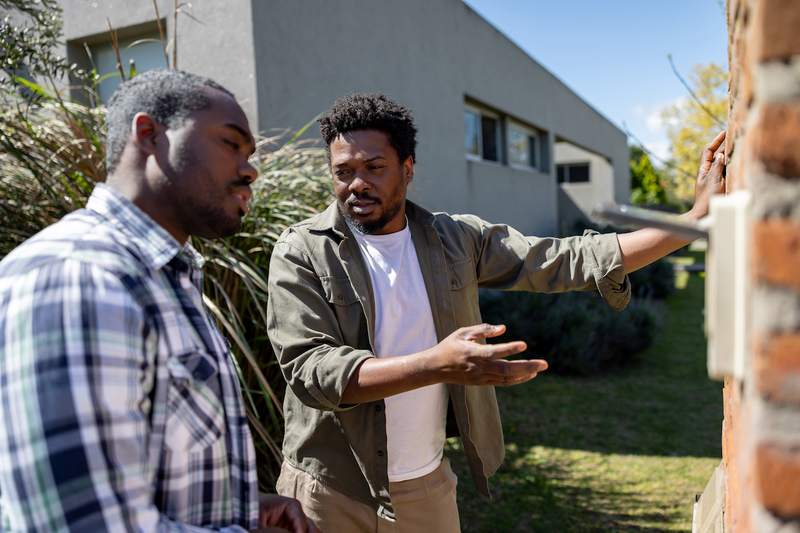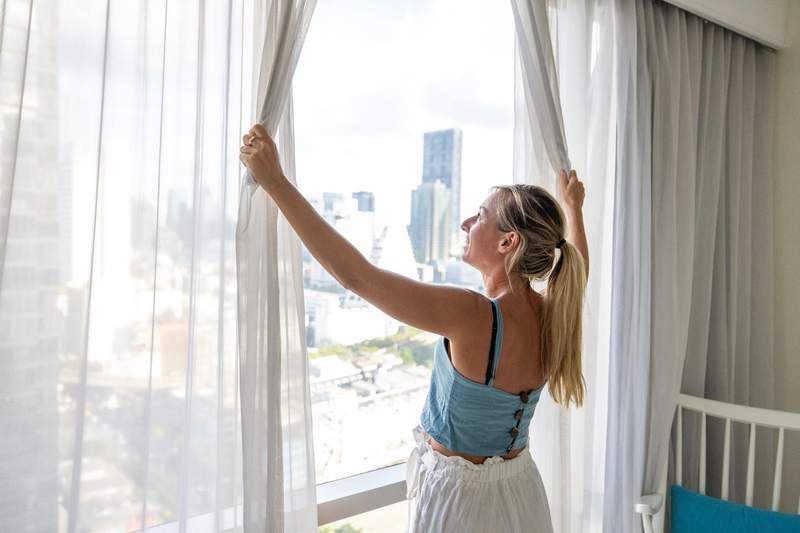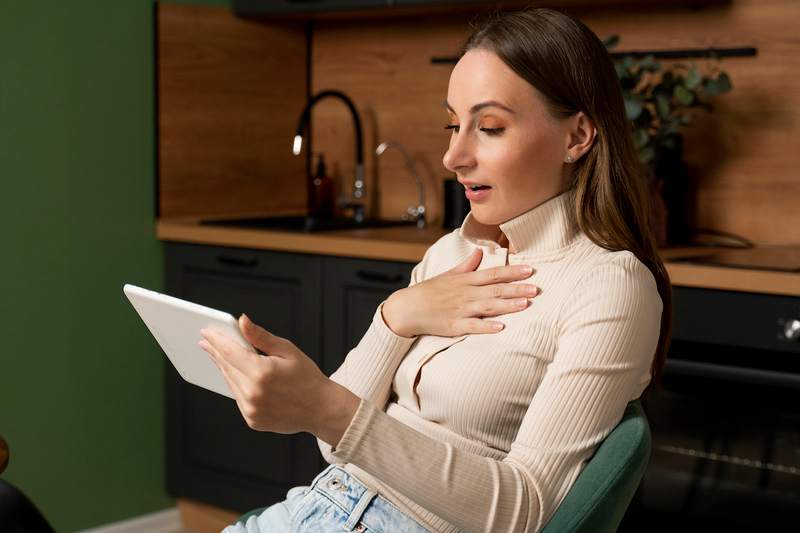If you’ve been thinking about buying a home, you know you need a down payment to get a mortgage. What’s more difficult to figure out is how much down payment for a house you really need.
Answering that question depends on many variables. So, before you buy a house, it’s important to understand how down payments work and how much you’ll need:
- What Is a Down Payment?
- Is a 20% down payment required?
- Minimum Down Payment Requirements for Conventional Loans
- Minimum Down Payment Requirements for Government-insured Loans
- How To Save For a Down Payment
- Down Payment Assistance Programs
- Down Payments for Second Homes and Investment Properties
- Down Payment FAQ
- The Bottom Line on Down Payments
What Is a Down Payment?
The down payment on a house is a percentage of the home’s sale price that the buyer pays upfront to secure a mortgage, according to Julie Aragon, CEO and founder of Aragon Lending Team, a mortgage broker in Los Angeles. The more a buyer can pay upfront, the less they need to borrow with a mortgage to purchase the home, and the more home equity they have.
How much you need for the down payment depends on the price of the home you’re buying, your loan type, and your lender’s specific terms.
How does my down payment affect my mortgage?
Most mortgages come with a minimum down payment requirement. The exact amount varies.
Making a larger down payment means you need to borrow less money to buy a house, which in turn lowers your monthly mortgage payment, and reduces how much interest you’ll pay over the loan term. It’s a good idea to put down more than the minimum if you can afford to do so.
Making a smaller down payment means you’ll need to borrow more money and pay more overall. But those trade-offs can be worthwhile if they let you buy a home and start building equity sooner rather later.
How much is the average down payment on a house?
The typical down payment amount for first-time homebuyers from 2018 to 2021 was between 6% and 7%. For repeat borrowers, the typical down payment amount was 17%.
So how does that translate to dollars? Say you’re planning to purchase a home at $440,300, which was the median price of a house in the second quarter of 2022. A down payment of 6% would be $26,418, whereas 17% would be $74,851.
Can I buy a house with no down payment?
Some government-backed loans offered through Veterans Affairs and the Department of Agriculture allow qualified borrowers to put no money down. Keep in mind, though, that the eligibility requirements for those loans can vary depending on the lender.
For example, USDA loans have no official minimum credit score, but lenders usually require a credit score of at least 640 to secure a mortgage with zero down.
How much house can I afford?
Figuring out how much you can spend on a house is a crucial step in the homebuying process. It can be complex, since you need to consider different factors such as how much you’re earning, how much debt you have, and how much room your budget has for a mortgage payment.
One common rule of thumb is called the 28/36 rule. The idea is that you should spend no more than 28% of your gross monthly income on housing costs, including the mortgage payment, homeowners insurance, and property taxes. When factoring in any additional debt obligations, such as student loans or a car payment, the total amount that goes toward debt repayment should be no more than 36% of your gross monthly income.
How to calculate a down payment
The down payment on a house is represented as a percentage of the sale price. To calculate a down payment, you simply need to multiply the sale price by the percentage you want to put down.
Here’s a closer look at how much a down payment could be based on potential sales prices and percentages:
Down Payment Costs Based on Home Price
| Home price | 3% down | 10% down | 15% down | 20% down |
| $200,000 | $6,000 | $20,000 | $30,000 | $40,000 |
| $300,000 | $9,000 | $30,000 | $45,000 | $60,000 |
| $400,000 | $12,000 | $40,000 | $60,000 | $80,000 |
| $500,000 | $15,000 | $50,000 | $75,000 | $100,000 |
Is a 20% Down Payment Required?
While 20% down payments once were the norm, they haven’t been required for decades, and lenders usually allow borrowers to get a mortgage with less. Today, how much down payment you must make on a house depends on the loan type and lender.
“Some home loans may require far less of a down payment,” says Michele Hammond, vice president of lending for Brecksville, Ohio-based CrossCountry Mortgage. “The industry average is typically within 6% (and) 8%.”
However, most lenders will require you to pay for private mortgage insurance if you put down less than 20% on a house. PMI protects the lender in case the borrower defaults. Borrowers usually can stop making PMI payments when their equity passes 20% of the home’s value.
To decide how much to save for a home down payment, you can use our mortgage calculator to compare monthly payments, interest costs, and more.
Benefits of putting at least 20% down
If you can afford to do so, it’s a good idea to put 20% down, according to Aragon.
“The loan terms typically get better when more money is put down,” she says.
Other benefits include having an appealing offer for sellers and enjoying more financial security.
You save money on interest
Homes are expensive, so when you take out a mortgage, you’re borrowing a lot of money. Even with a low rate, the interest on a loan adds up over 15 or 30 years. The more you can pay upfront, the less you need to borrow — and the less interest you’ll pay in total.
Your offer is more attractive to sellers
Putting more money down sweetens your offer because it establishes you as a reliable buyer.
“That down payment amount is also shared with a property seller, so they know how much a buyer has in cash versus the amount they’ll need a loan for,” Aragon says.
When evaluating offers on a house, sellers want to be sure that the buyer can afford the home, and that their financing won’t fall through. Otherwise, the sale could be delayed if the buyer needs to secure new financing, or if the seller must find another buyer.
You start out with greater equity in your home
A larger down payment means you own a greater stake in your home, and you’re less vulnerable to market fluctuations. For example, if you make a small down payment and your home drops in value, you could owe more than it’s worth — making it difficult to refinance or sell.
“When you put more money down, you don’t worry as much about market fluctuation and the value of your home,” Hammond says.
Drawbacks to putting less than 20% down
Even though it’s possible to put less than 20% down on a home, there are drawbacks — like paying PMI and higher overall loan costs.
You must pay private mortgage insurance
PMI costs about $30 to $70 per month for every $100,000 on your loan. So, with a $300,000 mortgage, you can expect to pay $90 to $210 per month for PMI.
“PMI can make the monthly payment significantly more, and it doesn’t go toward reducing the principal owed on the home,” Aragon says.
Your monthly mortgage payment is higher
Your monthly payment will be more expensive because you’ve put less money down and taken out a larger mortgage, Hammond says.
Also, your lender likely will offer less-favorable terms. A smaller down payment increases your risk as a borrower, and lenders offset that with a higher interest rate, which can drive your monthly payment up.
You pay more interest
Here are two examples of how your down payment affects interest paid.
Example A: You buy a home for $250,000 and put down 20% — which is $50,000 — to borrow $200,000. With a 30-year fixed-rate mortgage at 4% interest, your monthly payment is $955, and you spend a total of $143,739 in interest over the life of the loan. The total cost of your mortgage comes to $343,739.
Example B: You put 6% down — which is $15,000 — on the same house. Your loan amount becomes $235,000, your monthly payment increases by $167 to $1,122, and you end up paying $168,893 in interest for a total mortgage cost of $403,893.
The difference in total costs between the two loans is $60,154. Over 30 years, you would pay $25,154 more in interest with the mortgage from Example B. And don’t forget: You’d also have to pay PMI until your principal drops to $200,000 or less.
When it makes sense to put less than 20% down
If you only have enough to make a smaller down payment and can afford the monthly mortgage costs — including PMI, homeowners insurance, and property taxes — it may make sense to put less than 20% down.
It’s important to have a financial cushion to cover unexpected expenses. So, putting 20% down is risky if doing so will drain your savings. Hammond says that regardless of how much you put down, you shouldn’t use up all your savings to buy a home.
“You should set money aside for unexpected circumstances or hardships that could come up,” she says.
Buying earlier also starts you sooner on the path to building equity. With market values increasing, waiting could cost you the opportunity to buy now and accrue equity instead of paying rent.
Minimum Down Payment Requirements for Conventional Loans
Conventional loans are the most common type of mortgage. Private banks, credit unions, and other lenders issue conventional loans, of which there are two main categories: conforming and nonconforming.
Conforming loans
A conforming loan follows guidelines set by the Federal Housing Finance Agency, which oversees Fannie Mae and Freddie Mac. Fannie and Freddie are government-sponsored enterprises that buy conforming loans from lenders, allowing the lender to offer more loans.
In addition to requiring PMI for down payments of less than 20%, conforming loans have restrictions on the loan amount, the buyer’s credit score, and more. The minimum you can put down on a conforming loan is 3%.
Nonconforming or jumbo loans
Nonconforming loans, aka jumbo loans, exceed the limits on conforming loans. These loans usually are for more-expensive purchases, and your lender cannot sell them to Fannie or Freddie. That means the terms are up to the lender.
The down payment and credit score requirements usually are stricter, though it’s possible to put down as little as 10%.
Conforming vs. Nonconforming Loan Requirements
| Loan type | Maximum loan amount | Minimum down payment | Minimum credit score |
| Conforming loan | $647,200, or $970,800 in high-cost areas. | 3%, or 20% to avoid PMI. | 620. |
| Nonconforming or jumbo loan | Varies by lender. | 10%, or 20% to avoid PMI (can vary by lender). | 680 (may vary by lender). |
Minimum Down Payment Requirements for Government-Insured loans
Some loan types are insured by government agencies, including the Federal Housing Administration, VA, and USDA. Private lenders fund these loans, but federal backing allows them to relax some requirements — including down payment minimums. Still, each loan type has its own eligibility guidelines, which also can vary by lender.
FHA loans
FHA loans are helpful for homebuyers who haven’t saved up much for a down payment. If your credit score is at least 580, you can put down as little as 3.5%. If your credit score is between 500 and 579, you must put down at least 10%.
You’ll need to pay a mortgage insurance premium for the life of the loan — unless you put down 10%, in which case you’ll pay it for 11 years. There’s also an upfront mortgage insurance payment.
USDA loans
USDA loans are meant to help low-income homebuyers in rural areas afford homes. These loans don’t require a down payment, though a credit score of at least 640 usually is needed to qualify. Even if you don’t have good credit, you may still be able to get a USDA loan if you can prove your creditworthiness though other documentation.
VA loans
VA loans are designed for military service members, veterans, and qualifying spouses. These loans have no down payment or credit score requirements, though individual lenders may have their own requirements that you need to meet.
VA loans don’t require mortgage insurance, but you must pay a one-time funding fee that’s based on the loan type and amount.
Government-Insured Loan Requirements
| Loan type | Maximum loan amount | Minimum down payment | Minimum credit score |
| FHA | $420,680, or $970,800 in high-cost areas. | 3.5%. | 500. |
| VA | $647,200, or $970,800 in high-cost areas. | 0%. | N/A. |
| USDA | Varies by county. | 0%. | 640 (can vary by lender). |
How To Save For a Down Payment
Now that you know the down payment requirements for different loan types, it’s time to get saving. Here are some tips on how to save for a down payment:
- Create a budget. “We’ve noticed that the homebuying process is often the first time that people created a detailed monthly budget for themselves,” Aragon says. “That’s not surprising given that creating budgets is not the most enjoyable activity.” Even so, saving for a down payment is easier if you understand your monthly cash flow, what expenses can be trimmed, and how long it’ll take to reach your goal.
- Cut unnecessary expenses. If you’re struggling to come up with ways to save, it’s time to cut down on your discretionary spending. But that doesn’t mean living on a bare-bones budget forever. Look for ways to temporarily reduce monthly expenses, such as pausing your gym membership or downgrading utilities and subscriptions. Once you’re in your new home, you can add back expenses that make sense.
- Reduce or eliminate debt. Another effective way to make room in your budget for down payment savings is to reduce or get rid of existing debt. Whether you have high-interest credit card debt or student loans, paying them down can help you save more quickly. Plus, you’ll lower your debt-to-income ratio, improving your chances of getting a mortgage.
- Start early with an automated plan. If you could use help staying on track, automating your savings might help. Set up a certain amount of money to be automatically transferred from your checking account to your savings on a weekly or monthly basis. Just be sure to maintain enough of a buffer in your checking account so that you don’t overdraft.
- Get a second job or side hustle. If you want to save aggressively, it might be worth taking on extra work for increased income. You could take on another part-time job, or use your skills to earn money on the side. For example, you could tutor, walk dogs, or drive for a ride-sharing service in your spare time.
Down Payment Assistance Programs
If saving for a down payment seems out of reach, there are loan programs that could help bridge the gap. Down payment assistance programs generally are administered by states, and often are reserved for lower-income residents, Aragon says.
“The programs provide funds for down payments and closing costs associated with a home mortgage,” she says.
Assistance may come in the form of:
- Grants: These are funds that you don’t need to pay back. Generally, you must live in your home for a certain period of time to qualify.
- Forgivable loans: These loans offered by state and local governments often come with low or 0% interest. The payments are deferred, meaning you don’t have to start repaying the loan right away. Eventually, it’s common for the loan to be forgiven entirely.
- Tax credits: Governments and housing finance agencies provide tax credits to qualified borrowers, which reduces the amount of federal tax they have to pay.These tax savings can then go toward housing costs instead.
- Matched savings programs: These programs help prospective homeowners reach their down payment goals faster by matching a portion of their savings.
Check with the Department of Housing and Urban Development or your state housing finance agency to find programs you may qualify for. You also should ask potential lenders if they offer any assistance programs.
Down Payments for Second Homes and Investment Properties
If you’re interested in buying a secondary residence, such as a vacation home or an investment property, the down payment rules are different.
You usually need a down payment of at least 10% to take out a conventional loan on a second home. If you’re buying an investment property, such as a home that you plan to rent for additional income, you likely need a down payment of at least 15%.
Loan Requirements for Second Homes
| Loan type | Minimum down payment | Maximum DTI ratio | Minimum credit score |
| Conventional loan for a second home | 10%. | 43%. | 620. |
| Investment property | 15% for a one-unit property, 25% for two to four units. | 45%. | 680 for a one-unit property, 620 for two to four units. |
Down Payment FAQ
Still have some lingering questions about down payments? Here are the answers to some frequently asked questions.
Homebuyers with larger down payments often are viewed as less risky borrowers. A big down payment can make it easier to qualify for a loan, since you’re able to reduce the amount you need to borrow to afford a particular home. That also translates to smaller monthly payments and a decreased likelihood of defaulting on the loan.
Additionally, prospective buyers who can more easily secure financing are attractive to sellers who want to go through with the transaction as soon as possible.
Loan-to-value ratio is a measurement that compares the value of your mortgage to the market value of your home. It’s calculated by dividing your mortgage balance by your home’s value. For example, if you owe $200,000 on your mortgage and your home is worth $250,000, your LTV ratio is 80%. Making a larger down payment lowers your LTV ratio, which could help increase your odds of approval.
The Bottom Line on Down Payments
Knowing what percentage to put down on a house for your financial situation depends on several factors, and there’s no one-size-fits-all answer. You must consider how much you can save and how quickly, keeping in mind the overall state of the housing market. It’s also a good idea to crunch the numbers and see how much it would cost overall to put less than 20% down. Depending on your goals, it may be worth putting down less money to start financing a home sooner.
- National Association of Realtors
- Federal Reserve Bank of St. Louis
- Freddie Mac






